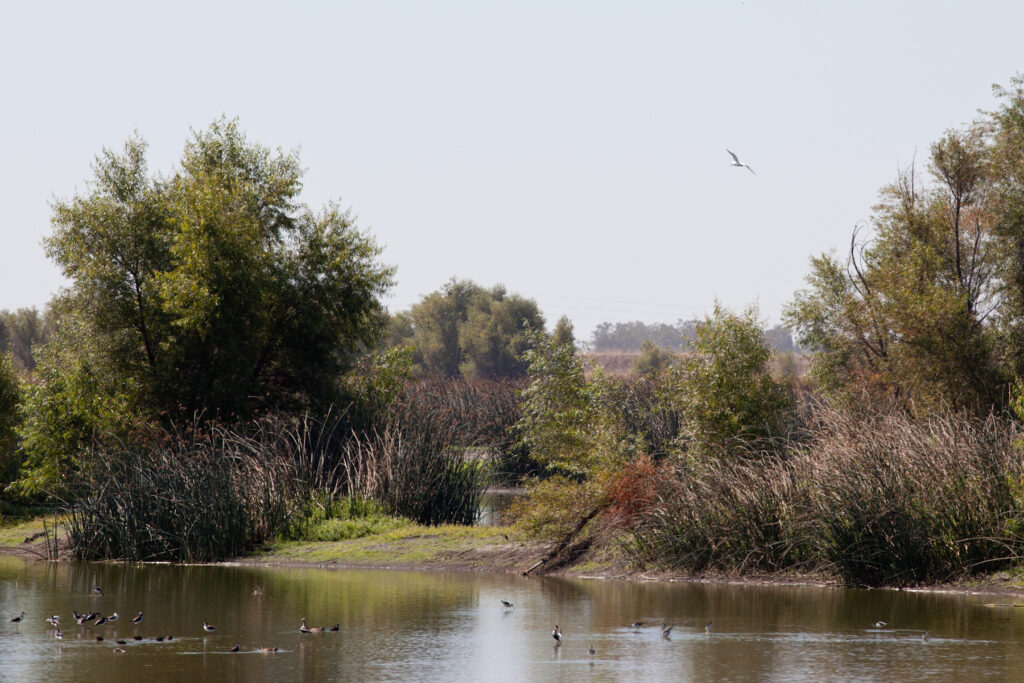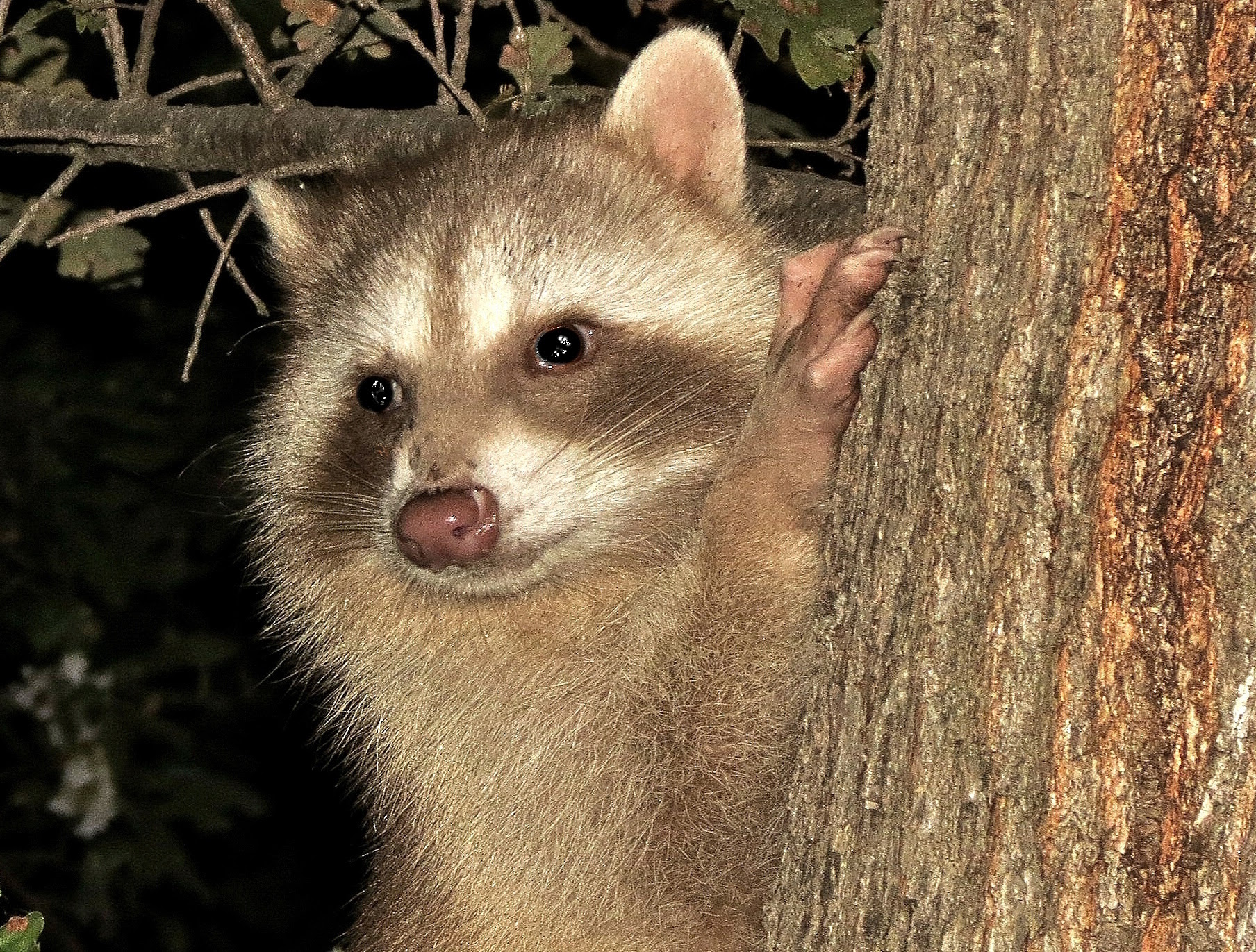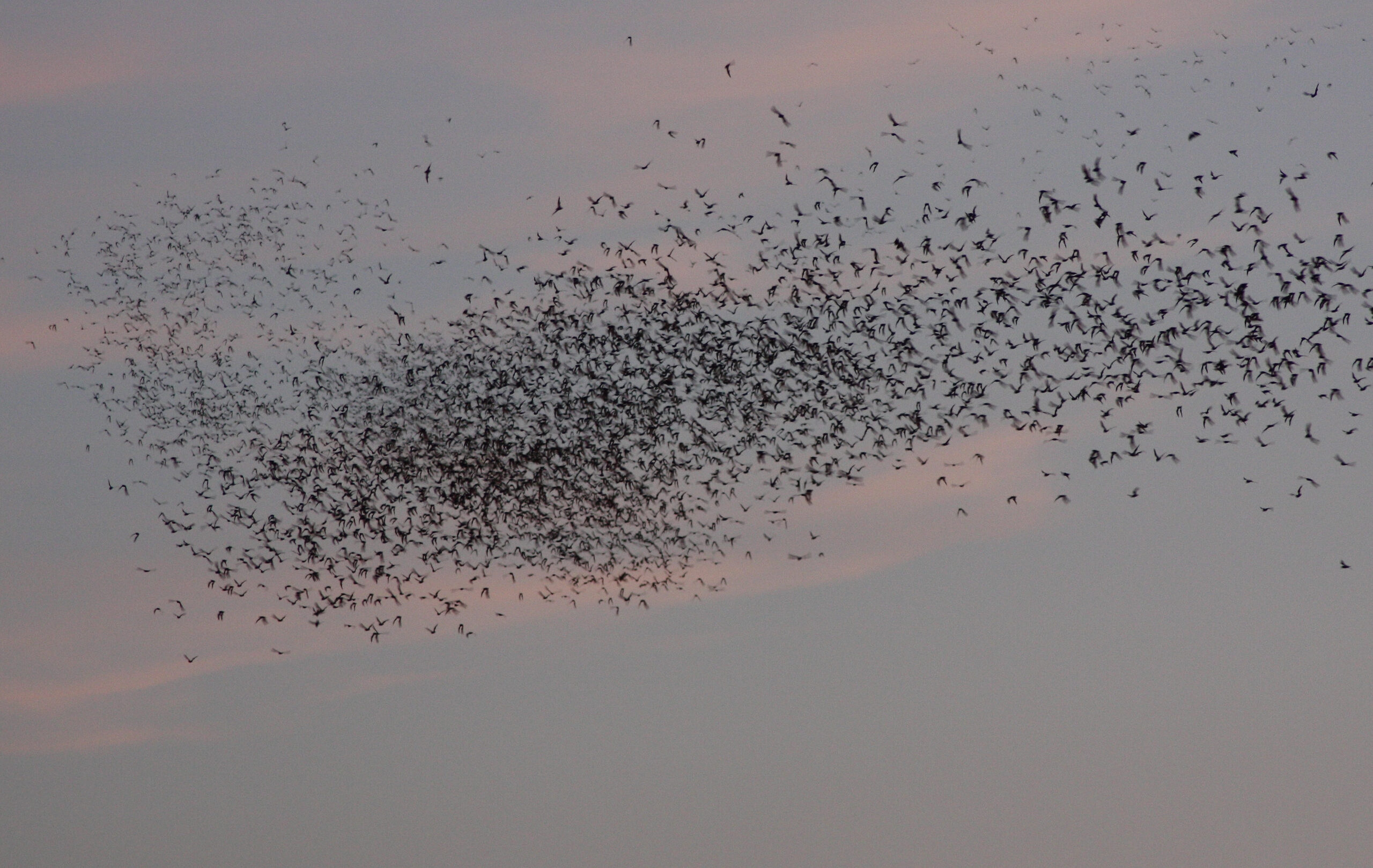One fine fall day you visit the Yolo Bypass Wildlife Area to see what you can see. There is a good diversity of birds—you identify several raptors and more than a dozen species of waterfowl feeding and resting in the shallow ponds. Sandhill cranes trumpet high overhead. A wooly bear caterpillar scurries at your feet. Colorful dragonflies sparkle in the sun. Startled frogs squeak as they leap into the water. You also give your attention to the unique plants in the wetlands, like tule and cattails. Just a moment ago, you had a fleeting glimpse of an animal diving into the dense vegetation along the water. What was it? It didn’t leave any tracks but strands of its fur are caught on a gum plant. A few strands of fur end up in your pocket. You leave the wetlands satisfied with the diversity of plants and animals accessible to you in the Bypass.
But was the list of plants and animals you saw a good representation of the diversity of life at the wetlands? Let’s try to answer that question with a look at the tree of life (depicted in abbreviated form above), which tells you about the evolutionary history of organisms, the relationships of organisms to each other, and the diversity among organisms. The tree is based on DNA sequencing, a tool as valuable to biologists as a telescope is to astronomers. Extracting DNA from a sample and determining the sequence of DNA in that sample is easy and inexpensive these days. But not so many years ago it was tedious and very expensive. Remember the Human Genome Project? It took 13 years and 2.7 billion dollars for the first human genome, completed in 2003. Today, a human sequence might take a few days and a few hundred dollars. DNA sequencing was truly transformative in the life sciences. It has literally reorganized our understanding of life.
DNA is the molecule that contains the genetic code, a kind of blueprint, of all life. The genetic code makes every individual unique, except for clones or identical twins who share exact copies of their DNA. The DNA molecule consists of nucleotides containing a sugar component, a phosphate group, and one of four nitrogen-containing bases, adenine (A), thymine (T), cytosine (C), and guanine (G). It is the order (the sequence) of the nucleotides, usually abbreviated by their base constituents (A, T, C, and G), that makes an organism unique. The millions of bases present in the DNA of all organisms provide an abundance of data for biologists, who look for similarities as well as differences in DNA make-up. Shared portions of DNA sequences create groups, called clades, of related species, depicted as branches or groups of branches on the tree of life. The lineage of an individual species is unique with respect to lineages of other species. The ambitious goal of this work is to illustrate a tree that organizes life based on shared ancestry.

Figure by Mike Davis
In the tree of life above, diversity is measured by totaling the lengths of the branches of the tree. Natural selection has caused all this diversity. You don’t have to look long at the tree to estimate that about two-thirds of all biodiversity on Earth is bacterial, while nearly a third is archaea. In other words, most of the life we see around us — all the plants and animals you saw in the Wildlife Area, for example, are actually a tiny minority of the planet’s biodiversity. It’s the microscopic and hidden bacteria and archaea that are responsible for most of the diversity. Archaea are bacterial-like but they clearly have an evolutionary history distinct from bacteria and have unusual metabolisms (for example, some use sulfur compounds for energy production). Some of their genes and several metabolic pathways are more closely related to those of eukaryotes. Today, scientists think there are two domains (the highest taxonomic ranking of life) on our planet—Bacteria and Archaea (Hug et al. 2016. Nature Microbiology DOI: 10.1038). The eukaryotes, those complex organisms that have internal membrane-bound structures and the ability to form multicellular organisms, like plants and animals, are firmly rooted in the domain of archaea. Note that eukaryotes, which include single-celled organisms as well as familiar plants and animals, represent just a small minority of the total number of species on the planet.
Eukaryotic diversity is classified into five supergroups (branches on the tree). Basically, the plant lineage includes all plants and green algae. The other branches of eukaryotes include the branch of animals and fungi (yes, they share a distant common ancestor); the Amoeba branch, which includes amoeba and slime molds (they are not really molds); the SAR clade, which houses foraminifera, brown algae, diatoms, dinoflagellates and Paramecium, among others; and the Excavata (e.g., Euglena). Representatives of all these groups are expected in the wetlands. So even relative to the rest of the eukaryotes, plants and animals hardly represent any diversity at all!
Let’s return to that sample of fur from the mammal sighting during your visit to the Wildlife Area. Luckily, the roots of some of the strands of fur are present, making DNA extraction a piece of cake. In the laboratory, it takes only minutes to extract DNA. To amplify the DNA to amounts that are useful for further analysis takes a little longer, but you have completed the exercise in a half day or less. The sequence of the DNA is determined in a day or two. Let’s say a partial sequence of one gene you recover is: tttattccta gccatacact acacatcaga tacaactaca gccttttcct. Usually, you would complete this exercise with a sequence more than ten times that length (at a minimum). Let’s identify the mystery animal by comparing your sequence to millions of sequences in a database called Genbank.
Google and go to Genbank, click on “GenBank Overview – NCBI” (and read about it if you are interested). Essentially, it is a freely available database of DNA sequences (and other things). In the row of pull-down menus towards the top, click on “GenBank.” Scroll down and select “BLAST,” a program that allows you to compare your sequence to millions of sequences in GenBank. Scroll down just a little and click on the big green box that says “Nucleotide BLAST” (because that is what you are going to do). In the box that says “Enter Query Sequence” and “Enter accession number(s), gi(s), or FASTA sequence(s),” copy and paste or manually enter your sequence (the 50 base sequence above). Finally, scroll down and click on “BLAST.” In a few seconds or maybe more, scroll down and look at the long list of similar or identical sequences to your query. What is the top match? Was it a skunk, a skink, a moose or a mink? (The first two words in the results are the scientific name of the animal. You may need to Google it). In addition to identifying organisms and clarifying evolutionary relationships, DNA sequencing is used to identify genes, study gene functions, research genetic disorders, and much more.




